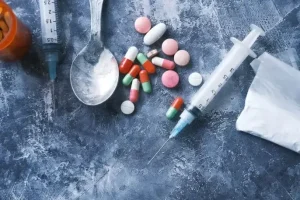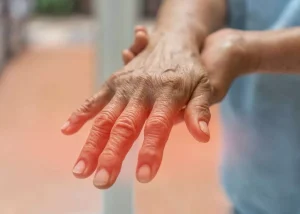
The use and abuse of drugs, primarily alcohol, by athletes is common. Going out for a drink after competition or training is a part of the culture of many sports. Athletes drink and use drugs for several reported reasons; to socialize, self-medicate pain/anxiety, and help falling asleep. When using is intended to improve athletic performance or mask banned substances, it is considered doping. It is thought that athletes’ attitudes towards drugs are heavily influenced by the culture of sports [1]. Elite athletes have financial competitive motivations that cause them to dope and these motivations differ from that of recreational athletes.[198] The common theme among these motivations is the pressure to physically perform.

Human growth hormones and peptide hormones
However, both substances are currently on the WADA Monitoring Program for 2015. WADA is observing them in order to detect potential patterns of misuse in sport. Another point of view is that doping could be legalized to some extent using a drug whitelist and medical counseling, such that medical safety is ensured, with all usage published.
Cardiovascular effects of performance-enhancing drugs
- AddictionResource fact-checks all the information before publishing and uses only credible and trusted sources when citing any medical data.
- With all the information, attention, and debate over performance-enhancing drugs (or PEDs), many people want to further understand how performance-enhancing drugs affect one’s body.
- There is limited information in relation to treatment of addiction in athletes which will be a primary focus of this paper.
- Please note, this is only a quote of benefits and/or authorization.
One other promising avenue for potential future treatment may involve the use of ketamine for substance use issues in athletes. Ketamine is an anesthetic drug that has been demonstrated to be effective in the treatment of pain. Ketamine is an NMDA receptor antagonist but its drug use in sports true mechanism of action has still not been completely elucidated. Recent studies suggest it amplifies targeting of rapamycin (mTOR) signaling as well as increasing brain derived neutrophic factor (BDNF) which promotes neuronal survival among other possible functions [98].
The Battle Against Doping in Sports
From this information, testers can assess if an athlete suddenly has a large jump in certain hormones or proteins in their blood, when compared against their normal levels. The father of anabolic steroids in the United States was John Ziegler (1917–1983), a physician for the U.S. weightlifting team in the mid-20th century. In 1954, on his tour to Vienna with his team for the world championship, Ziegler learned from his Russian colleague that the Soviet weightlifting team’s success was due to their use of testosterone as a performance-enhancing drug. Deciding that U.S. athletes needed chemical assistance to remain competitive, Ziegler worked with the CIBA Pharmaceutical Company to develop an oral anabolic steroid. This resulted in the creation of methandrostenolone, which appeared on the market in 1960 under the brand name Dianabol. During the Olympics that year, the Danish cyclist Knud Enemark Jensen collapsed and died while competing in the 100-kilometer (62-mile) race.
West Germany
Other effects attributed to HGH include increase in muscle mass and strength as well as tissue-repairing (recovery). However as HGH is often used in conjunction https://ecosoberhouse.com/ with other PEDs its direct role in these benefits is unproven. Still, it is quite easy to see why athletes believe it will enhance their performance.

There is a research base demonstrating that many doping agents are in fact performance-enhancing. However, some substances (eg, selective androgen receptor modulators, antiestrogens, and aromatase inhibitors), used in an effort to enhance performance, have little data to back up their effectiveness for such a purpose. Note that the studies cited in this paper are chosen as being historically important or representative of the bulk of the research on the topic, and the broad overview provided in this paper does not aim to cite all evidence on the effects of these substances.


Opponents of allowing athletes to gene-dope argue that doping is doping and all doping is unfair, and that gene-doping is basically science fiction that has numerous and serious ethical concerns such as parents altering fetuses in vitro to produce super athletes. Proponents of allowing athletes to use stimulants argue that Air Force pilots, long haul truckers, and others use stimulants without stigma, and that their use does not lessen the integrity of the game. Proponents of allowing athletes to consume marijuana argue that the benefits for athletes are well-documented, that the drug is better than opioids, and that the ban is a continuation of an unjust drug war. PFCs, due to their size, are able to enter the body’s tiny capillaries, providing very efficient local oxygen delivery to greater areas of the body, while the makeup of the drug also allows it to deliver oxygen to peripheral tissues. Glorifying “natural” playing in sports only encourages more injuries and, thus, short careers.
While women use these substances as well, their use is more prevalent amongst men. Below are examples of banned substances and methods by category, with information about medical uses, performance effects on athletes, and side-effects. Some categories also include common pro and con arguments for banning the substances or doping methods.
Other side-effects include baldness and low sperm count for men, and increased facial hair and deepened voices for women. In January 2013, the retired American cyclist Lance Armstrong admitted to doping in an interview with Oprah Winfrey, and was stripped of his seven Tour de France wins and banned from sport for life. A major drug scandal at the 1998 Tour de France, external underlined the need for an independent international agency to set standards in anti-doping work.